Fire Protection System
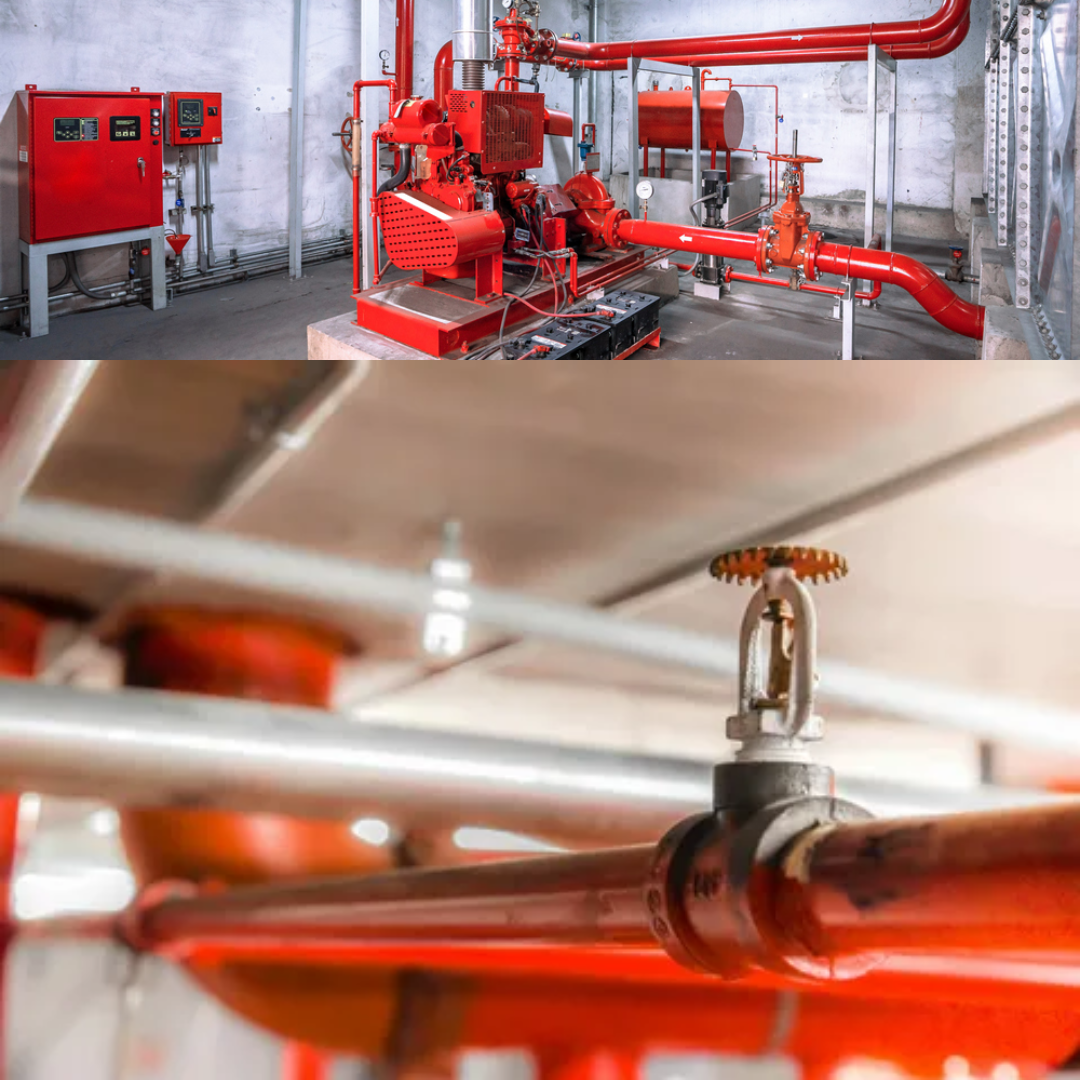
Sprinkler System
A fire sprinkler system is an active fire protection method, consisting of a water supply system, providing adequate pressure and flowrate to a water distribution piping system, onto which fire sprinklers are connected. Although historically only used in factories and large commercial buildings, systems for homes and small buildings are now available at a cost-effective price. Fire sprinkler systems are extensively used worldwide, with over 40 million sprinkler heads fitted each year. Even though Fire Sprinkler Systems are a Life-Saving System and are not designed to protect the building, 96% of buildings that had fires and were completely protected by fire sprinkler systems were controlled by the fire sprinklers alone.
Wet pipe, Dry pipe, Pre-action, and Deluge are four types of fire sprinkler systems. Each of these systems helps prevent flames from spreading and reduces fire damage. The main difference between these types of fire sprinkler systems is their applications and how they activate.
Deluge Water Spray System
A Deluge Fire Suppression System is a sprinkler system with an empty pipe system, meaning there is no water stored in the piping network. The water is instead stored behind a control valve. A typical Deluge system will have a control valve, a dedicated water supply, and a sprinkler operated detection system.
A Deluge system is directly connected to a dedicated water supply and when the system is activated, the Deluge Valve releases water to these open sprinkler heads.
Common Applications
Deluge systems are typically used in high-hazard areas where fire may spread rapidly such as power plants, aircraft hangars, and chemical plants. Unlike traditional wet sprinkler systems, the sprinkler heads on a Deluge system are always left in an open position to allow for large amount of water to be dumped on a hazard. This open position allows water to flow from every single sprinkler head at once versus one at a time.
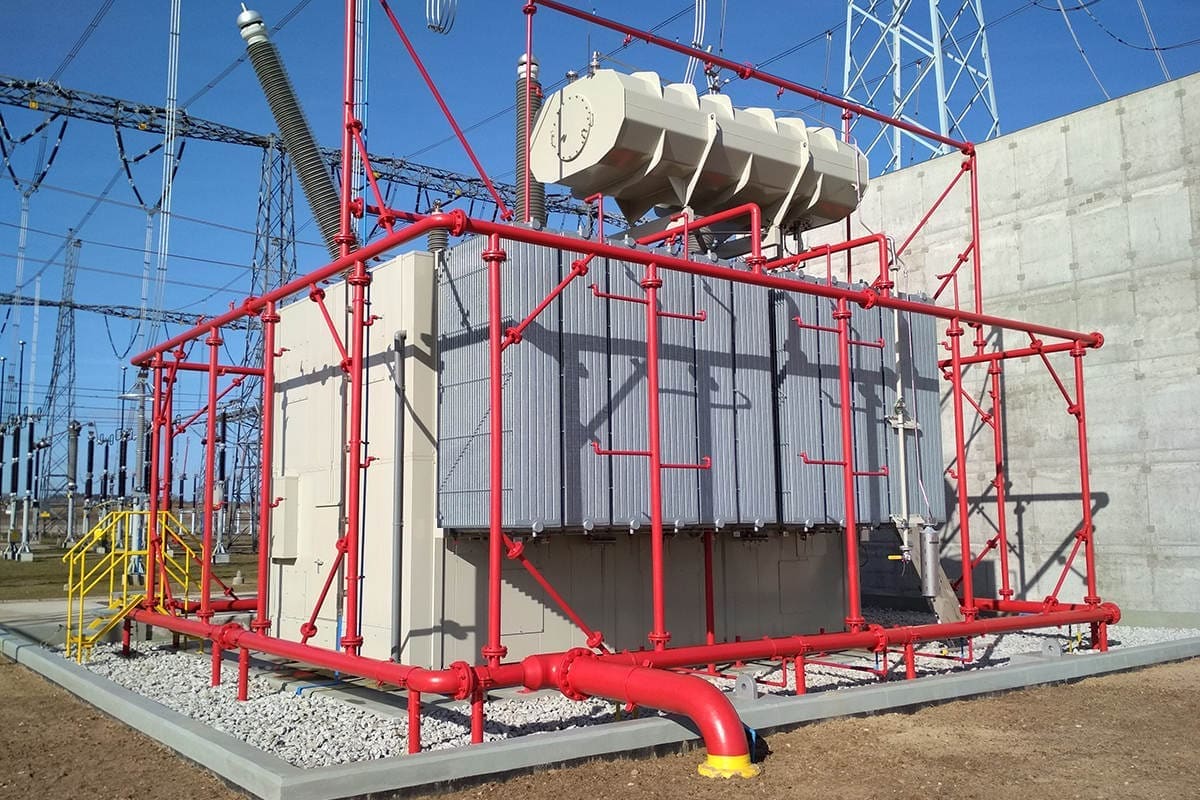
Advantages of a Deluge System
A deluge system offers several advantages over a traditional fire sprinkler system. In a traditional sprinkler system, the pipes are filled with water and the sprinkler heads are closed. A deluge system is a dry system which means it is not at risk for having frozen pipes. The pipes of traditional sprinklers can freeze when exposed to cold temperatures because they are filled with water. In addition, a deluge system offers a quicker response to a fire by releasing water through all its open heads at once. A regular sprinkler system with closed heads must activate each sprinkler head individually. Therefore, the deluge system is more effective in high hazard situations.
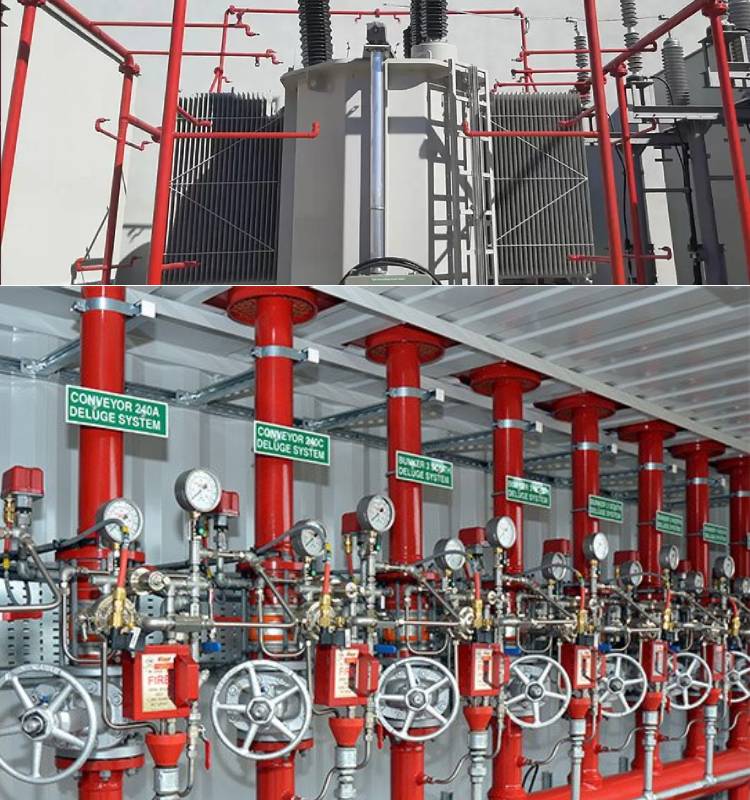
Water curtain systems
Water curtain system is one of the active fire suppression systems (Active fire suppression system means it becomes active only when there is fire). As the name itself defines, if forms a curtain to prevent spread of smoke / heat / flame from fire captured area to no fire area.
Water Curtain Pump is connected to the water curtain nozzle through deluge valve. From pump to deluge valve, the pipelines are normally flooded (flooded here means the pipe line contains water pressurized). From deluge valve to water curtain nozzle, the pipelines are dry (no water).
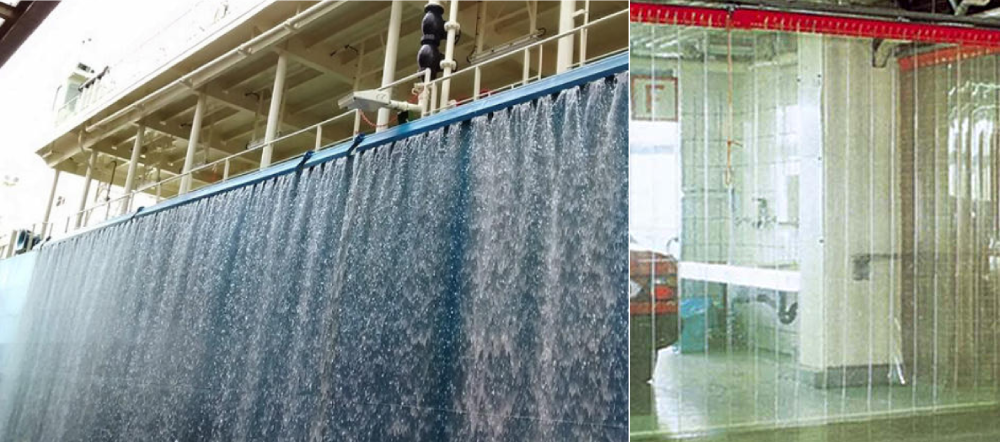
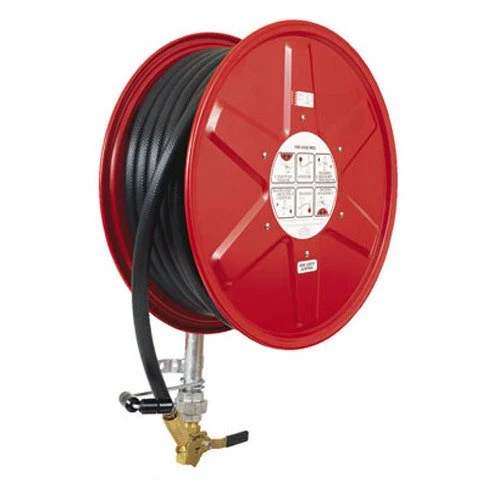
Fire Hose Reel System
Fire hose reels are located to provide a reasonably accessible and controlled supply of water to combat a potential fire risk. They are ideal for large high-risk environments such as schools, hotels, factories etc.
Fire Hydrant System
It is designed to provide rapid access to water if a fire breaks out. Fire hydrant installation consists of a system of pipe work connected directly to the water supply main to provide water to every hydrant outlet and is intended to provide water for the firemen to fight a fire.
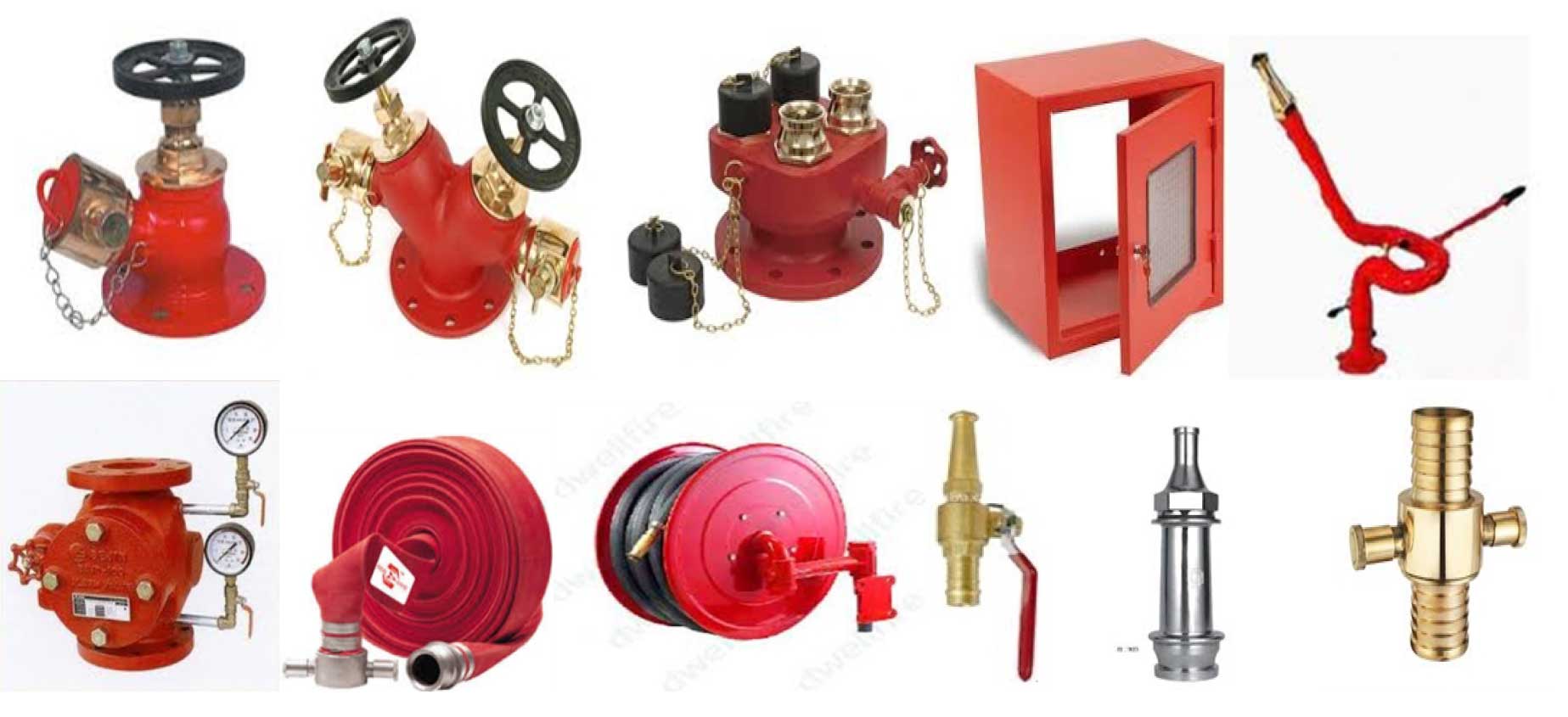
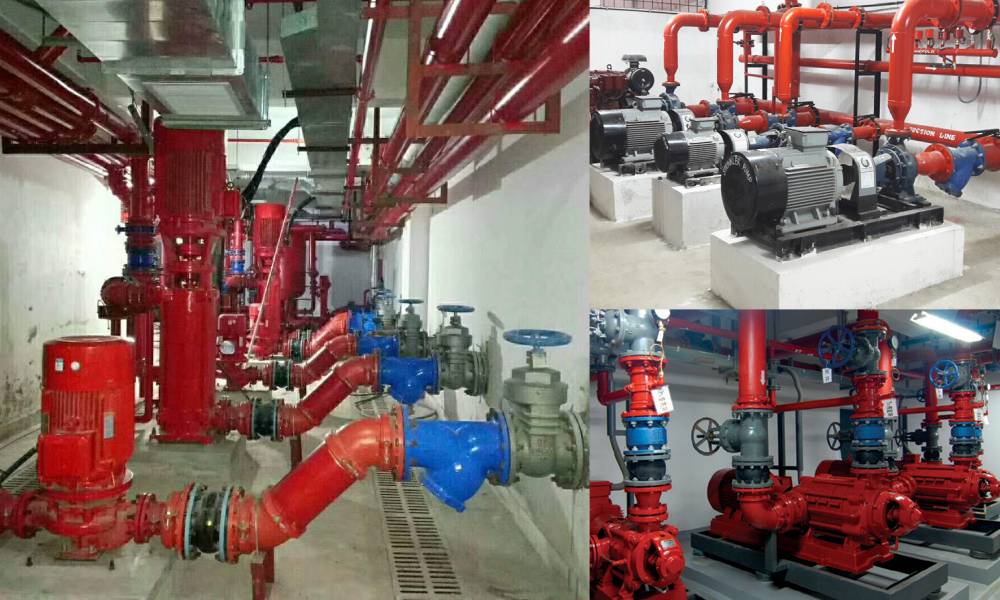
Fire Pump Room
Fire pump room is a part of a fire sprinkler system’s water supply and powered by electric and diesel. The pump intake is either connected to the public underground water supply piping, or a static water source (e.g., tank, reservoir, lake). The pump provides water flow at a higher pressure to the sprinkler system risers and hose standpipes.
The fire pump starts when the pressure in the fire sprinkler system drops below a threshold. The sprinkler system pressure drops significantly when one or more fire sprinklers are exposed to heat above their design temperature, and opens, releasing water. Alternately, other fire hoses reels or other firefighting connections are opened, causing a pressure drop in the firefighting main.
Types of pumps used for fire service include: horizontal split case, vertical split case, vertical inline, vertical turbine, and end suction.
